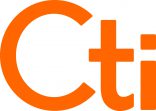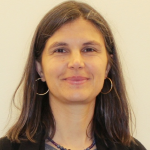Actuarial Science



The third year of the ENSAE Paris engineering program includes six specialization tracks. Each track has been designed to offer a coherent sequence of courses (advanced theoretical courses, applications, projects, seminars, etc.), preparing students for a major field of work and giving them a broad and in-depth vision of that field. Each of the professions practiced by ENSAEs will call to varying degrees on statistical methods, data science and modeling, which are therefore present within each track.
Learn more about admissions to the engineering program

The "Actuarial Science" track at ENSAE Paris is one of the 8 initial training tracks recognized by the Institute of Actuaries (since 1985). It allows its students to apply to the Institute of Actuaries to become associate members, after defending their actuarial thesis before the IA jury. After three years of professional experience, they can apply for qualification, then certification, and thus become a member of the international actuarial community as a Fully Qualified Actuary.
Profiles
Actuaries are professionals in risk assessment, modeling and management in their economic, insurance, financial and social dimensions. The profession is organized at the national level, by the Institute of Actuaries (IA), and at the international level, by the European Actuarial Association (EAA) and the International Actuarial Association (IAA).
The ENSAE Paris program provides the advanced knowledge and skills necessary for the actuary (governed by the core syllabus) and enables its students to acquire a solid methodological foundation in mathematics, statistics, economics and finance. It also provides advanced training in various fields of specialization, in line with developments in the insurance sector.
Finally, actuarial science is regularly ranked by economic magazines and job sites (Forbes, Career Cast, etc.) in the top 10 best professions and offers high-potential career prospects as well as an attractive salary. As the actuarial profession is organized on a global scale, it also offers many opportunities for expatriation.
Professions
Historically, actuarial studies appeared as soon as the problem of organizing and financing a life insurance system arose. Then the activity of the actuary was extended to all insurance systems (pension and provident plans, personal insurance, fire and accident insurance, and various risks). The core business of the actuary was the pricing of insurance contracts and the provisioning of the liabilities related to these contracts. However, behind the actuary's job lie a wide variety of careers and sectors of activity, of which here are a few examples.
In property and casualty insurance, nearly 70% of the companies' liabilities are made up of reserves for claims to be paid. Their impact on the results of insurance companies makes their evaluation highly strategic. This is why senior actuaries in insurance companies are called upon to occupy management positions of great responsibility.
Natural catastrophe risks and industrial risks of large groups have an increasingly important impact on the liabilities of non-life insurance companies. The use of reinsurance products has become a necessity for the solvency of companies. It is therefore understandable that actuaries naturally find their place in insurance and reinsurance companies to set up risk sharing mechanisms.
The inversion of the production cycle in insurance leads companies to collect large sums of money and to manage them in an intelligent way. The amount of assets managed by life insurers at the end of 2019 amounted to nearly 1,800 billion euros (source: FFSA). The actuary therefore has a privileged place to occupy in the fields of asset-liability management and asset allocation. These professions require a very good mastery of portfolio management tools and financial mathematics. The development of retirement savings plans in France over the last twenty years has created job opportunities for actuaries.
Nevertheless, the actuarial profession is not limited to insurance companies, reinsurance companies and mutual insurance companies. Actuarial firms, internal audit departments of insurance companies and the regulatory authority (ACP, Autorité de Contrôle Prudentiel) also offer transverse jobs to actuaries, such as in the field of control and audit.
In summary, actuaries have a wide variety of jobs in many sectors of activity, both public and private, such as insurance, reinsurance, mutual insurance companies, provident societies, pensions, control, banking and asset management, industry, consulting, auditing, academic or corporate research and teaching.
It is a profession in constant evolution: data sciences, digital revolution, regulations, international context... actuarial science must constantly adapt to the evolution of society!
Courses
The compulsory scientific courses and the optional courses recommended for the track are described below. Each semester, you can choose one modern language (maximum). English is compulsory if your level is lower than B2. The options can be mixed between the different tracks (under time constraints) to create hybrid profiles. It is then recommended to discuss their coherence, as well as the articulation of the choice of courses with a possible M2 followed in parallel, with the Master studies director or/and the person in charge of the tracks. For those who wish to obtain the title of actuary, the risk theory course in 2A (0 ECTS) is required.
The courses listed below are for informational purposes only, and are provisional. They correspond to the official curriculum for the 2024-25 academic year.
You can find this curriculum in PDF format on the ENSAE intranet: Scolarité => Troisième année => Près-requis et choix des voies => Schéma_UE_3A_2024_2025 (three documents)
First semester
- Second year internship: 7 ECTS credits for the 1st semester of the 3rd year
- Integrated curriculum
| Course | ECTS | Hours (course+tutorials) |
|---|---|---|
| Actuarial Study of Non-life Insurance | 4 | 24+0 |
| Actuarial Study of Life Insurance | 4 | 24+0 |
| Foundations of Risk management | 3 | 18+0 |
| Microeconomic Theory of Insurance | 3 | 18+0 |
| Risk Theory | 3 | 15+6 |
Compulsory :
| Course | ECTS | Hours (course+tutorials) |
|---|---|---|
| Duration Models | 3 | 12+0 |
You can choose from 1 or 2 options (including foreign language) from the entire 3A course catalog, semester 1 (subject to compatibility with your schedule), to reach a total of 30 to 31 ECTS over the semester. We recommend the following courses in this track:
| Course | ECTS | Hours (course+tutorials) |
|---|---|---|
| Applied Statistical Learning | 4 | 18+6 |
| Stochastic calculus (ENSTA) | 3 | 13,5+7,5 |
| Catastrophic Risks and Insurance Markets | 4 | 24+0 |
| Copulas and financial applications | 3 | 18+0 |
| Ethics and responsibility in data science | 2 | 12+0 |
| Health Economics | 3 | 15+0 |
| Risk measures | 2 | 12+0 |
| Pricing and hedging of financial derivatives | 4 | 24+9 |
| Research project in finance and insurance - 1st semester | 3 |
Second semestre
| Course | ECTS | Hours (course+tutorials) |
|---|---|---|
| Actuarial Study of Pensions | 2 | 12+0 |
| Extreme-value theory | 2 | 18+0 |
| Portfolio Management | 4 | 24+0 |
| Regulation and Insurance | 2 | 18+0 |
| Risk Management et Réassurance | 2 | 12+6 |
| General concepts in law and introduction to banking law | 2 | 12+0 |
| Séminaire d’assurance (conférence professionnelle) | 0 | 9+0 |
You may choose 1 or 2 options (including foreign language) from the entire 3A course catalog, semester 1 (subject to compatibility with your schedule), to reach a total of 30 to 31 ECTS over the semester. We recommend the following courses in this track:
| Course | ECTS | Hours (course+tutorials) |
|---|---|---|
| R language in Actuarial science | 2 | 12+0 |
| Artificial Intelligence in insurance and actuarial studies | 3 | 12+6 |
| Credit Risk | 3 | 18+0 |
| Machine learning for finance | 3 | 21+0 |
| Interest rate curve models | 3 | 21+0 |
| Research project in finance and insurance - 2nd semester | 3 |
- The end-of-study internship: 10 ECTS credits for the 2nd semester of the 3rd year










